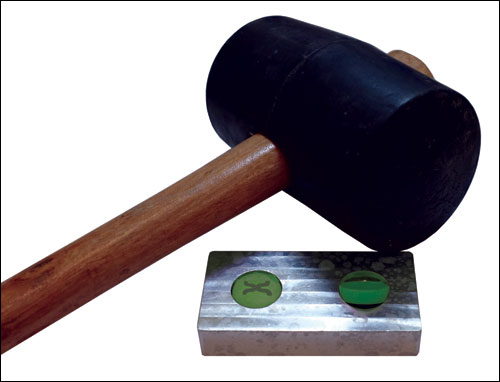About 18 months ago, Xerafy modified its embeddable Pico-iN tag for a construction company customer, to make it possible for that company to embed the tag in metal assets, such as I-beams, without using epoxy adhesive. The customer’s success with its modified Xerafy tags—which can be inserted into a hole like a cork in a wine bottle, Xerafy reports, and stay in place without epoxy—has led the firm to commercialize the tag for the market globally. The resulting Pico Wedge and Nano Wedge tags are slated to be released commercially next month.
The tags, which come encased in a green nylon polymer casing, can be fitted into a hole without requiring epoxy to hold them in place, says Evelyn Ong, Xerafy’s sales director. This, she explains, eliminates hours of waiting for the adhesive to cure from the time required to tag assets.
Companies that embed Xerafy’s ultrahigh-frequency (UHF) RFID tags typically track such assets as construction equipment, oil and gas tools and drilling equipment, surgical tools, automotive parts and other components for aerospace manufacturing. Because the tags are typically utilized in rugged environments in which they could be damaged or knocked loose, a user would drill a hole in an asset, place the tag into that hole and then fill the hole with epoxy resin in order to hold the tag in place. However, it can take up to four hours for some adhesives to cure. Moreover, if the tag is attached to a vertical surface, the epoxy resin will not be distributed evenly.
Customers had shared this concern with Xerafy, Ong says. The company first developed the Wedge tag for the construction company, more than a year ago, but is now releasing two versions of that tag (representing two sizes) for any of its customers that would benefit from a tag that is easier to embed. She compares the tag to a wine stopper that can be pressed into a bottle, thereby creating a seal. It can be pressed into a hole by hand, she notes, or be hammered into it—though she recommends using a rubber-faced mallet. The tag is encased in such a way that it can sustain the types of impacts such a mallet would cause. For situations requiring the tag to be mounted more securely, she notes, epoxy could be added.
Both the Pico Wedge and the Nano Wedge are passive UHF EPC RFID tags designed for application on metal. They each contain an Alien Technology Higgs-3 RFID chip, with 512 bits of user memory, and have an IP68 rating. The Pico Wedge measures 24 millimeters by 6 millimeters (0.9 inch by 0.2 inch) and has a read range of up to 8.2 feet when embedded in metal. The larger Nano Wedge measures 35.5 millimeters by 7.5 millimeters (1.4 inches by 0.3 inch) and has a read range of up to 13.1 feet when embedded in metal.
Because the tag comes with an added casing to hold it in place in a drilled hole, and to sustain hammer blows, it will cost approximately 20 percent more than the previous Xerafy tags that are applied in the traditional method via epoxy, the company reports.
About a half dozen customers globally, in a variety of industries, are now testing the new Wedge tags. According to Ong, those most expected to be interested in the tags include automotive, oil and gas, and aerospace companies tracking large metallic parts, in addition to health-care firms tracking surgical tools and medical devices.
Xerafy will demonstrate the Pico Wedge and Nano Wedge tags at its booth (#110) at RFID Journal LIVE! 2013, being held from Apr. 30 to May 2 in Orlando, Fla.



